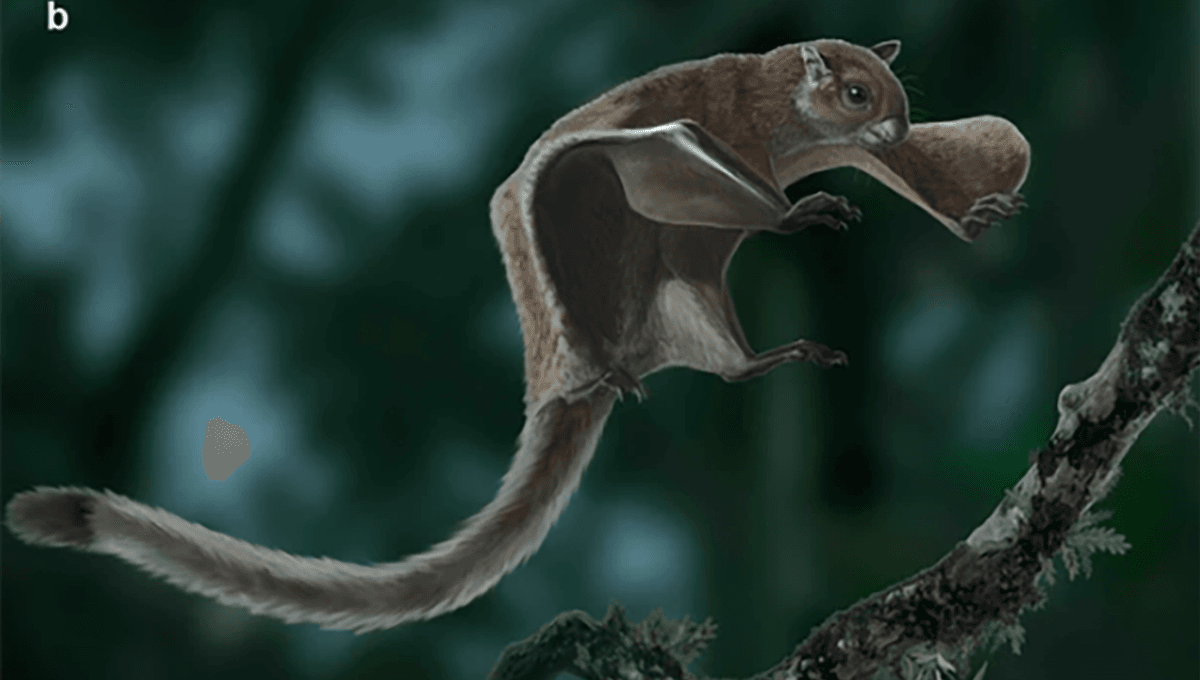
Palaeontologists from East Tennessee State University and the Autonomous University of Barcelona, Spain, have just revealed the existence of a new fossil specimen belonging to a giant flying squirrel. This large critter once glided through the landscape of Southern Appalachia, around 4.7 million years ago.
ADVERTISEMENT
North America has had a longer history of flying squirrels than any other part of the world. The first known specimens date back to the Late Eocene era (56 to 33.9 million years ago). They then vanished from the country’s fossil record during the Late Miocene (around 9 million years ago) and then reappeared in the Pliocene and Pleistocene eras (5.3 and 2.6 million years ago).
The newly unearthed species, known as Miopetaurista webbi, was discovered at the Gray Fossil Site, an incredibly rich site located in Washington County, Tennessee. This species of flying squirrel has previously been discovered in sites in Europe and Asia dating to the Miocene and Pliocene but was not confirmed to be within North America.
“Finding Miopetaurista in North America was quite unexpected as this genus is only known from Eurasia,” Dr Isaac Casanovas-Vilar from the Institut Català de Paleontologia in Barcelona explained in a statement. “There had been some uncertain reports from Florida, but the specimen of the Gray Fossil Site provided new information and helped to confirm that somehow these giant flying squirrels crossed the Bering Land Bridge alongside other mammals about 5 million years ago.”
Interestingly, these cat-sized squirrels are not related to any of the squirrels living in Appalachia today. Instead, they are more closely related to giant squirrels in Japan, China, and Indonesia.
Despite their larger size, Miopetaurista were pretty lightweight, weighing around 1.3 kilograms (3 pounds), which made them quite agile.
At the time they crossed into North America, the planet was a lot warmer than it is now. The warmer climate allowed their ancestors to travel into the continent as they could move between the dense, humid forests that thrived under these conditions. Some of these forests have been preserved in the Gray fossil record. However, the Ice Age eventually changed this.
ADVERTISEMENT
“As the climate cooled over time, the Pleistocene Ice Ages led to the isolation of these giant flying squirrels in warmer refuges like Florida, and ultimately contributed to their extinction,” said Montserrat Grau-Camats. “The last American Miopetaurista lived millions of years after all Eurasian species of this genus had disappeared, meaning at the time they were ‘living fossils.’”
The squirrel fossil represents the latest specimen to come from the Gray site, which is a veritable treasure trove for ancient specimens. Other recent discoveries include a species of bone-crushing dog that was discovered in 2022.
“It is amazing to imagine these giant flying squirrels gliding over rhinos and mastodons living in the forests of Tennessee 5 million years ago,” Dr Joshua Samuels of the East Tennessee State University concluded. “This really points to the potential of the Gray Fossil Site to keep surprising us after 25 years.”
The paper is published in the Journal of Mammalian Evolution.
Source Link: Giant Flying Squirrel Soared Through The North American Skies Nearly 5 Million Years Ago